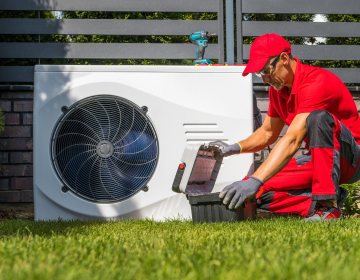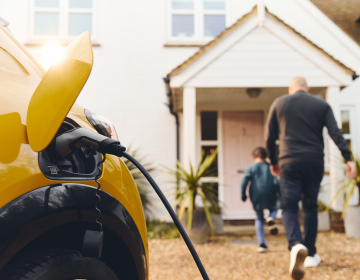Sava
Plugging into the Future: Domestic Electric Vehicle Chargepoints
17 April 2023 4624 Views
.png)
This article is partially based on “Plugging in to the Future”, NHBC Foundation, NF90, used by kind permission.
As part of the government’s net zero carbon strategy, the UK is moving to an electricity-based society. This means transitioning everything from home heating to vehicles to be electrically powered, whilst simultaneously scaling up renewable generation.
Currently, only 2-3% of cars on the road are fully electric or hybrid, illuminating the scale of the challenge posed by switching away from fossil fuelled cars. Despite this, Electric Vehicle (EV) registration is set to nearly double in 2023 from 267,203 to an estimated 448,000, raising the market total to 1.8 million, showing that progress is being made.
The successful roll out of EVs is heavily reliant on the corresponding infrastructure, of which chargepoints are a fundamental part. Put simply, without enough chargepoints, EVs will not be viable. The UK requires roughly 4.1 million chargepoints by 2030, so how and where we build these chargers is an issue of great importance.
In the same way that we all charge our phones overnight whilst sleeping, this is most users’ preferred way of charging their EVs, making homes one of the most sought-after places for chargepoints, and our properties a key area of the transition.
There are three kinds of stationary chargepoints, each aptly named after the speed at which they can power cars – ‘rapid’, ‘fast’, and ‘standard’.
‘Fast’ and ‘standard’ chargepoints are the types most likely to be installed at residential properties. ‘Fast’ chargepoints deliver 7kW, meaning they comply with Part S of Building Regulations so will be common at new builds. ‘Standard’ chargepoints are older and operate at an inferior 3.6kW, hence are only really found at properties where chargepoints have been added post construction.
‘Rapid’ chargepoints have a power output of 43kW to 50kW and newer ‘ultra-rapid’ chargepoints can reach up to 350kW. However, these types of chargepoints are typically only found at motorway service stations or industrial premises.
For reference, fully charging a small 40kW car battery will take 11 hours with a ‘standard’ chargepoint and six hours with a ‘fast’ unit. In contrast, a 50kW ‘fast’ chargepoint can charge the same sized battery to 50% in around 20 minutes.
Domestic EV chargepoints must be installed outside or in outbuildings such as a garage. They are either a standalone post or attached to the wall. At the time of writing, the average home chargepoint costs around £1,000 including installation. However, this cost can be reduced by the EV Chargepoint Grant provided by the Office for Zero Emissions Vehicles, offering £350 or 75% off the cost of a charger and installation, whichever is less.
It is apparent that as EVs become more popular, so too will homes with EV chargepoints. When speaking to Paul Swindlehurst, partner at estate agents Michael Anthony, he commented:
“Over the last 12 months EV chargepoints have become an increasing issue. This is largely in older and conservation areas that don’t have the facility to guarantee near-home parking, let alone somewhere where an EV chargepoint can be placed outside. There have been several instances where potential buyers have turned up to view properties and have then said that they have an electric car and how would they charge it. The only answer is, in these locations they can’t. This is an issue that will only rise, and a viable solution needs to be found.”
As technology advances, chargepoints are starting to offer more benefits than just car charging, with smart chargepoints able to facilitate interesting grid demand management services. One such example is ‘time-of-use tariffs’ which offer cheaper electricity prices at off-peak times, incentivising consumers to move away from peak time charging. Another option is vehicle-to-grid services which may even earn consumers money for exporting electricity from their car battery to the grid.
No doubt as both the number of chargepoints and the need to manage energy demand grows, we will see further innovative uses for EVs and their chargepoints – becoming more than just a vehicle to power your vehicle.
Previous Articles

From estate agent to residential...

What’s hot in housing? The...

Buying a home with battery...

Electric Vehicle Charging: What Homebuyers...




